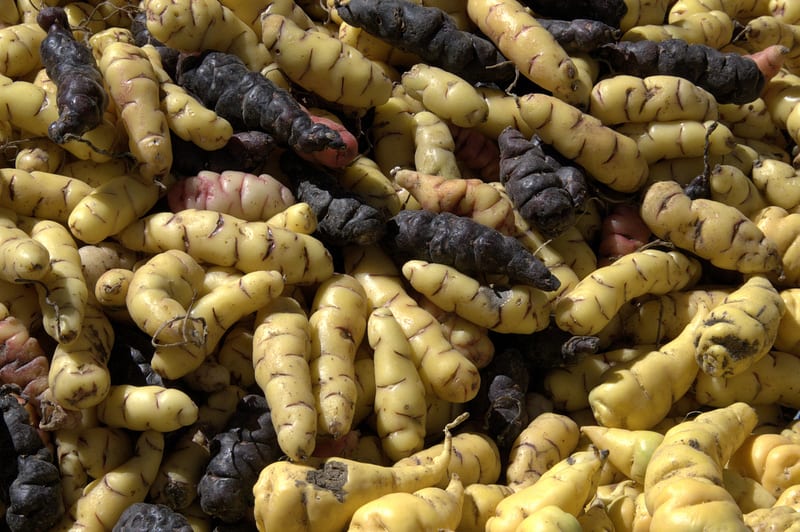
🌿 Morphology
🌞 Growing conditions
🌍 Origin and family
🌾 Uses
Warning: Despite the care taken in writing this sheet, it is essential to cross-reference sources before using or consuming any plant. When in doubt, consult a qualified professional
Permaculture uses
Oca tubers are edible, offering a slightly tangy taste and can be eaten raw, boiled, baked, or fried. Leaves and young shoots are also edible, adding a lemony flavor to salads. The plant acts as a ground cover, suppressing weeds. Different cultivars offer varied colors and textures, enhancing garden aesthetics. Some cultivars are better suited for specific climates and uses.
Permapeople description
Oxalis tuberosa is a perennial herbaceous plant species in the wood-sorrel family Oxalidaceae. It is native to the Andes region of South America, where it is cultivated for its edible tubers.
Botanical description
Oxalis tuberosa is a perennial herbaceous plant in the wood-sorrel family Oxalidaceae, native to the central and southern Andes. It grows to a height of 30-50 cm. The plant produces small, clover-like leaves and small yellow flowers. Its edible tubers are elongated and knobbly, varying in color from white, yellow, orange, pink, red, to purple. The tubers develop near the soil surface. It exhibits photoperiod sensitivity, forming tubers only under short day conditions.
Companion planting
Oca's companion planting needs are not widely documented. Generally, it benefits from growing with other root vegetables. Avoid planting near plants that require long day lengths.
Propagation methods
Primarily propagated by tubers. Small tubers or pieces of larger tubers with 'eyes' can be planted directly in the ground. Cuttings from the stems are also possible, though less common.
History and traditions
Oca has been cultivated in the Andes for centuries, predating the Inca empire. It was a staple food for many indigenous communities. Traditionally, tubers were left exposed to the sun to increase sweetness by converting starches to sugars. It was introduced to New Zealand in the 19th century, where it is now widely grown.
Usage calendar
Plant tubers in spring after the last frost. Flowers typically appear in late summer to autumn. Tubers are harvested in late autumn to early winter after the foliage dies back. Pruning is generally not necessary, but removing dead or damaged foliage can improve air circulation.
